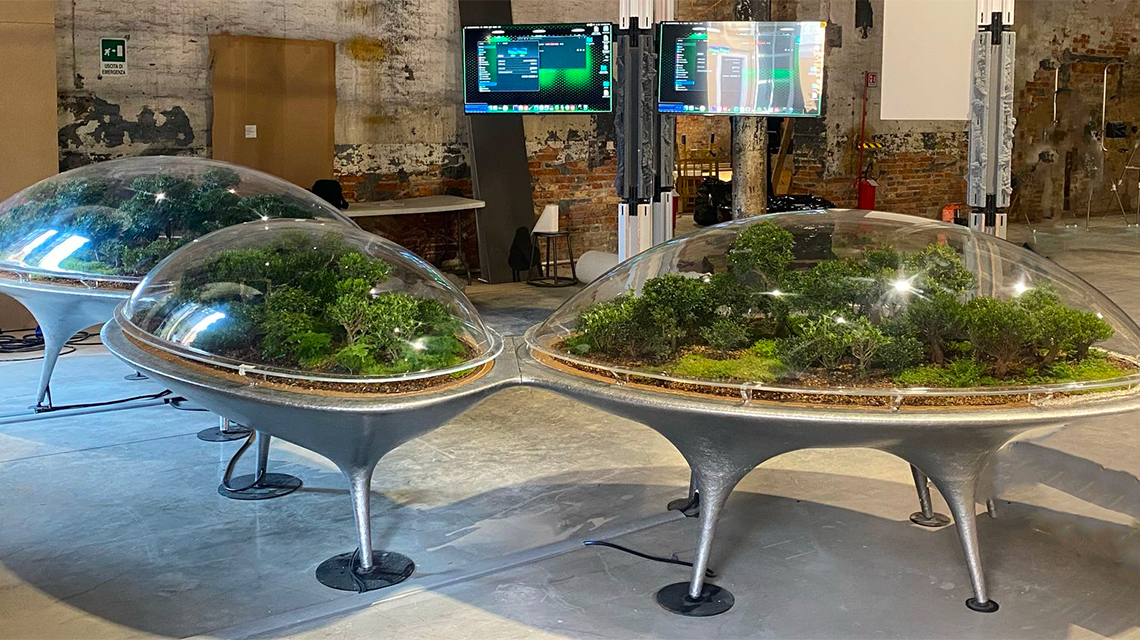Italian National Agency for New Technologies, Energy and Sustainable Economic Development

Art: Venice Biennale, ENEA technologies featured in the “City of Plants” installation
The installation “City of Plants”, designed by the international studio MAD Architects, was part of the 19th international architecture exhibition at the Venice Biennale. The work explored the interplay between architecture, technology, and nature within the urban fabric, using music as a medium. This was made possible thanks to FBG (Fiber Bragg Grating) optical fiber sensors developed and integrated by researchers from ENEA and Campus Bio-Medico University of Rome.
The installation comprised three interconnected systems: a base equipped with environmental sensors; three miniature living landscapes enclosed in transparent, bubble-like cases; an immersive experience of dynamic sounds and lights.
The optical fiber sensors embedded in the cases monitor real-time variations in the plants’ microclimate (humidity, temperature), responding to both artificial factors (lighting and irrigation) and visitor interaction. These signals were processed and converted into musical notes and light patterns through dedicated algorithms, creating a continuously evolving soundscape. Additional sensors detect vibrations caused by visitors’ footsteps, which were also transformed into harmonized musical tones.
“The collaboration with MAD Architects has been highly stimulating, as it allowed us to explore the possible and desirable relationships between art, nature, and technology, as well as between scientific research and contemporary architecture,” says Rosaria D’Amato, ENEA researcher at the Micro- and Nanostructures for photonics laboratory.
“Beyond the sensory experience, City of Plants is scientifically relevant because it enables long-term monitoring of a closed -but not isolated - environment composed of carefully selected plants. It helps us study how plants adapt to artificial habitats, providing insights into their health, growth, stress factors, and their role in making artificial environments more livable.”
“The FBG optical fiber sensors offer significant advantages: they are highly sensitive and accurate, thin and nearly invisible, require no local power supply, can be connected in series to minimize cabling, and transmit signals over long distances for easy cloud processing,” explains Michele Arturo Caponero, ENEA researcher at the same laboratory.
The ENEA Micro and Nanostructures for photonics laboratory has extensive expertise in FBG optical fiber sensors, with proven applications in environmental and structural monitoring across sectors such as safety, nuclear, and cultural heritage. In collaboration with Campus Bio-Medico University of Rome, these technologies have also been applied in the biomedical field, particularly in wearable systems.
